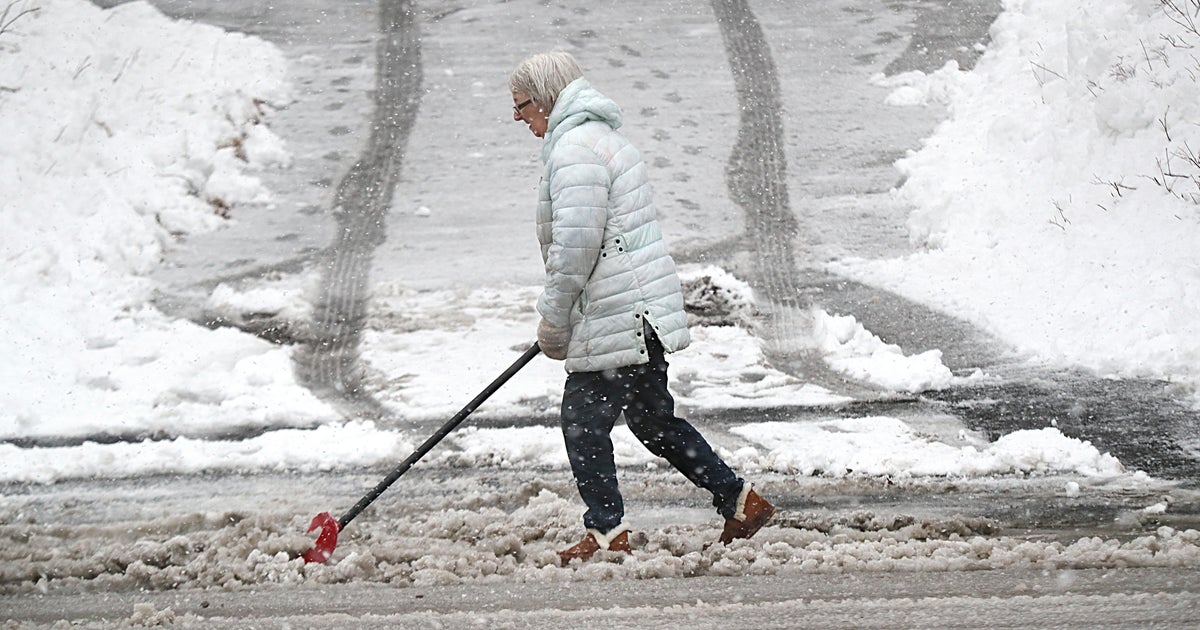Boston Software Company Developing Small Satellites To Improve Weather Forecasts
BOSTON (CBS) -- Weather technology is exploding, rapid progress is happening from forecasting to modeling. A local software company is on the front lines, creating the most powerful weather engine the world has ever seen to prepare us from the most hazardous weather.
"Weather is more critical than ever before for a whole host of reasons. I think climate change is making all of these weather events much more extreme, much more frequent and we need to be prepared," said Rei Goffer, a co-founder of Climacell.
Climacell is a Boston-based weather intelligence company that emerged from the founders' personal experience.
"We come from Israel and spent over a decade in the military flying airplanes, patching helicopters, F-16s and being in special forces and we all had some pretty nasty experiences with weather, near death experiences if you will, so we've said well something needs to be done," Goffer explained.
The co-founders have been friends for nearly 20 years. They reunited in Boston as they attended Harvard and MIT. From their experiences in the military, the entrepreneurs started the software company to help people prepare and manage weather related impacts.
"We help people, individuals, companies, businesses, governments, to deal with their weather and environmental-related challenges," said Goffer.
A number of major brands to local governments use the weather impact decision making tool that uses cutting edge technology.
"Everything around us sensors the weather around us in some way," Goffer explains.
Data from smart cars, to cell towers, and even satellites stream into a hyper-local weather model the company created.
"We've developed a whole set of these technologies that enable us to tap into all sorts of networks and really use their data to improve our weather forecasting," said Goffer.
Companies use a dashboard platform that gives them updates on where and when weather will impact a certain area. Users can select any point on a map, and Climacell can tap into these sensors to get a more accurate observation of what's going on in the atmosphere. Not only does this improve forecasting capabilities but it's a breakthrough for remote areas where weather observations are limited or nonexistent. It's also a great tool for areas that get various types of weather within a short distance.
Quincy native and former WBZ Meteorologist Ed Carroll explains how this technology would help is hometown during a storm. "Because of the topography along the shoreline and even over in west Quincy, the weather can change dramatically and from one place to another and you need to see insights in different areas of the city we can do that with our digital monitors we can put them in strategic areas so the city can better deploy crew , have a better understanding of what the microclimates are and what's going on so they can see things ahead of time and get ahead of storms that way."
"I've never seen anything with this level of detail, for our different neighborhoods of our city," said Quincy Mayor Thomas Koch. Taking the guesswork out of snow removal for him translates into cost savings for the city.
"It can be raining in Hough's Neck, it could be four inches of snow in the hills of West Quincy. Having the ability to actually identify streets and neighborhoods and gives us feedback and information like that, it is really tremendous. It will allow us to be far more efficient with the tax payer dollars" Koch says.
Climacell just announced they are investing to push the limits of forecasting in what they call 'Operation Tomorrow Space.' The company will be launching a series of satellites equipped with radar into space. They will be able to gather critical precipitation data as they orbit earth.
"And it is about developing a constellation of small satellites about the size of a mini fridge that carry radar instrument and putting them in space, many of them, so we can cover the entire globe. The gaps are big, right we still are lacking a tremendous amount of information about what's going on in the atmosphere right now." Goffer explained.
A quest NASA has been attempting for decades as current fixed radar domes on land can be obstructed by mountains and tall buildings. A radar in space will be able to detect precipitation from about the clouds. A real game changer for remote areas of the world and our oceans. Being able to gather data from the genesis of a hurricane could help people prepare earlier and potentially save lives.
"The reason we are going to space is not because it's cool, it is cool, but it's because we've actually identified a real world problem and space is the only way to solve it," said Goffer.
Climacell is planning to launch for the second half of next year 2022, and the full scale constellation will be starting in 2023. After a month in orbit, the radar satellites will be ready to use. Learn more about Climacell here.




